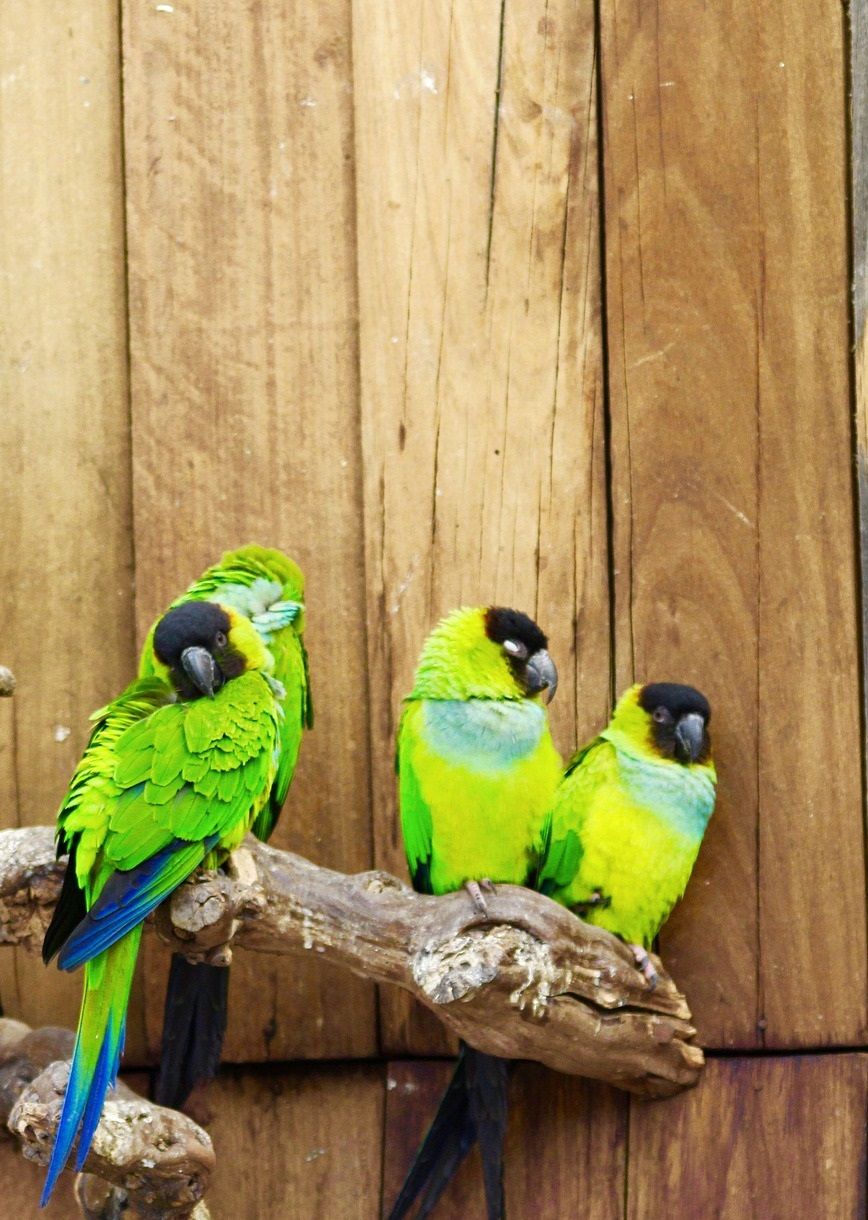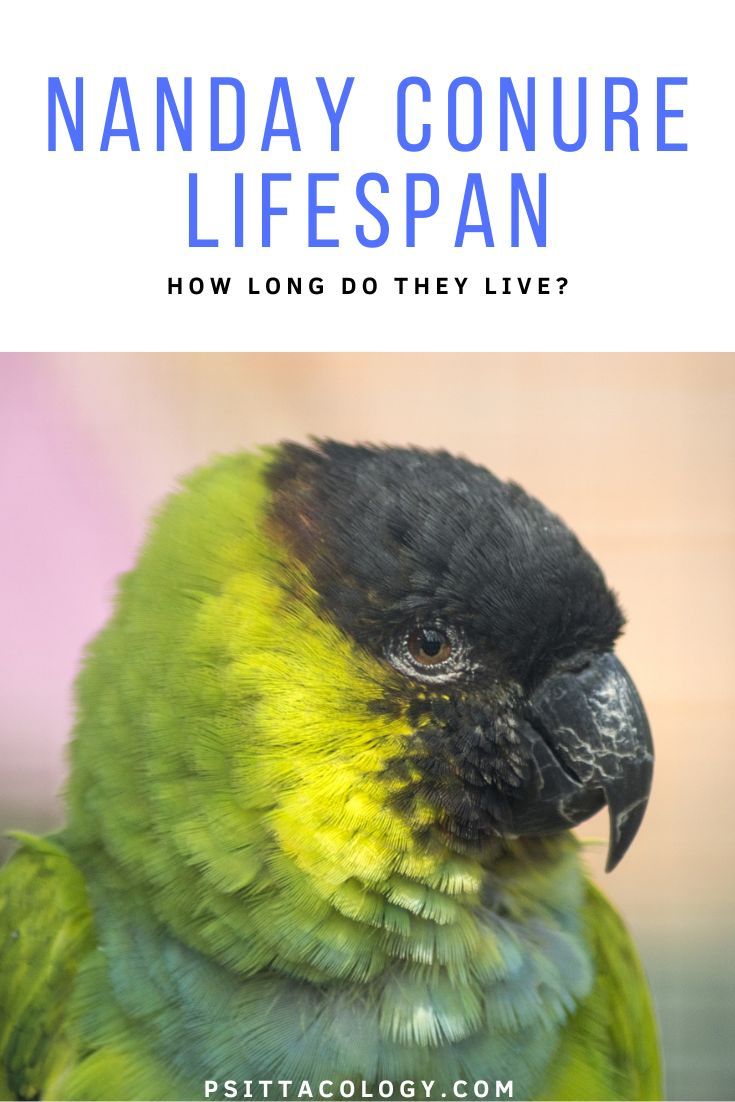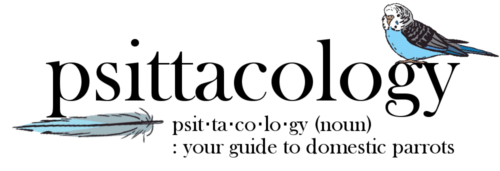If you’re thinking of adding one of these South American parrots to your family, you’re likely wondering about nanday conure lifespan. How long can you anticipate your new feathered friend to be a part of your family for? What can you do to make sure it lives a long and happy life?
Let’s go into nanday conure lifespan and how to help ensure yours makes it to a respectable age.
This post contains affiliate links. If you make a purchase, a small percentage will go directly to Psittacology at no additional cost to you. Thank you for supporting Psittacology!
Nanday conure lifespan in the wild
As with many other parrot species, there are unfortunately few studies that observe the lifespan of nanday conures (formerly scientifically known as Nandayus nenday, now Aratinga nenday) in the wild. It’s quite difficult to follow an individual bird from the start to the end of its life to see how long it lives!
According to Parrots: A Guide to the Parrots of the World, their habitat is “often modified by grazing and an overall decline in numbers has probably occurred”. This unfortunately makes it more difficult to get an accurate understanding of how long the black-hooded conure lives.
With that said, The Encyclopedia of Life has recorded the lifespan of the nanday conure in the wild to be 18.7 years. Mortality among parrot chicks in general tends to be very high, but if they make it to adulthood, they can end up living pretty long lives.

Nanday conure lifespan in captivity
Like many other birds, nanday conures live longer in captivity (as long as all of their needs are met) than they do in the wild. The lack of predators and other dangers inherent to the South American savannahs and forests this species naturally inhabits does help.
Survival on the Ark, a 2012 study I often reference in these parrot lifespan posts, observed various parrot species in zoos. It found the following:
- The oldest nanday conure out of the 411 individuals recorded in the study lived for 30.24 years.
- The median age for the 19 currently living individuals included in the study was 20.79 years.
While this study looked at zoos and not birds being cared for inside the home, similar lifespans can probably be expected for nanday conures kept as companion animals.
With proper diet, exercise, and care, you can expect your nanday conure to live at least 20 years. Even 30 years or more would not be unusual!

What influences nanday conure lifespan?
As with all companion animals, how long a nanday conure lives can be affected by many factors. Some of these are in your control, like diet and exercise. Others, like genetics, are usually not.
Nanday conures are susceptible to a few health conditions, including:
- Conure bleeding syndrome
- Pacheco’s disease
- Respiratory issues like aspergillosis
In addition to these concerns, conures are also social birds that require a lot of attention and interaction. If your bird doesn’t receive enough socialization, it can start feather plucking out of depression and lack of stimulation. The stress can negatively impact its lifespan.
Conures also rely on proper diet and exercise, as well as care and supervision from their owners to prevent common problems like malnutrition, obesity, accidents (they’re too curious for their own good sometimes!) and more.
If you’re thinking of adding a nanday conure to your family, or even if you’ve had one for a while, I highly recommend having a look at the full nanday conure care guide to get started or to refresh your knowledge.
Tip: Have a look at the posts on parrot emergency care and how to parrot-proof a space. Taking the right measures can greatly reduce the risk of unfortunate and sometimes fatal accidents.
How old is my nanday conure?
If you purchased your conure from a breeder, they should have specific information for you about when your bird hatched. If you’ve adopted your bird from a rescue or pet store and it doesn’t have a ring, it can be more difficult to find out its age.
Unfortunately, there aren’t really any ways to tell how old a parrot is. The only exception is if it’s still under a year old. Young birds’ colors are less bright: their black hood won’t have much of a brown ring around it yet. Their legs aren’t quite as red and the blue on their chest appears more faded.
Another vague indicator of your nanday conure’s age is their behavior. An older bird will generally be calmer and more laid-back. It’s likely to stay closer to its cage and to its owner. Its feathers might not look quite as nice anymore, and it can develop typical health issues like cataracts.
Nanday conures have a decent lifespan, and they’re energetic, social birds that can be great companions. However, like all parrots, they need special care and a lot of dedication to keep them happy and healthy. Because they can live for over 30 years, you should consider whether you’re ready to commit for a long time.
If you have more questions about nanday conure lifespan or want to share your own experiences with these beautiful parrots, please leave a comment below!
Sources & further reading
Young, A. M., Hobson, E. A., Lackey, L. B., & Wright, T. F. (2012). Survival on the ark: Life‐history trends in captive parrots. Animal conservation, 15(1), 28-43.
Parr, M., & Juniper, T. (2010). Parrots: a guide to parrots of the world. Bloomsbury Publishing.
Young, A. M., Hobson, E. A., Lackey, L. B., & Wright, T. F. (2012). Survival on the ark: Life‐history trends in captive parrots. Animal conservation, 15(1), 28-43.

I have a black hood nanday conure,he is amazing,, I walk with him on my shoulder out side he loves it I can’t get him to eat veggies or fruit is there someway you can help me and him, he will eat potato pees Cherry’s pineapple , But cherries are his favorite, If there’s anything anyone knows to help me get him to eat vegetables. Please share that with me, Thank you for your information that you have posted,
Hey! He eats potato peels?! Not raw I hope, those are toxic!
Anyway, there are various tricks that can help you get your parrot to eat its veggies. Have you tried making chop and mixing in his favorite pellets or seeds? Other tricks include trying different veg (my cockatiels go nuts for leafy greens but not much else), pretending to eat the food yourself, placing a mirror near the food so it seems like another parrot is eating it, making a toy out of the food… and most importantly, just make sure there’s veggies in the cage always. Don’t give up, you’ll get him to eat them eventually!
My Nanday conure Sassy will be 27 in June 2024, she’s presently 26-1/2 and looks just like she did when I got her at 4-1/2. Still just as opinionated too. Great guard bird. If a deer or a lawn guy walks into the back yard she puts up a commotion that could wake the dead. 🙂
While there is always at least 5 or 6 expensive bird toys in her cage, her favorite toys are two napkins. She drags them around. Pulls them over her head when she takes a nap and stuffs them in her food pot to sit on when she goes to sleep for the night.
Thanks for sharing! Sounds like her name suits her perfectly. I wish you guys many more happy years together 🙂